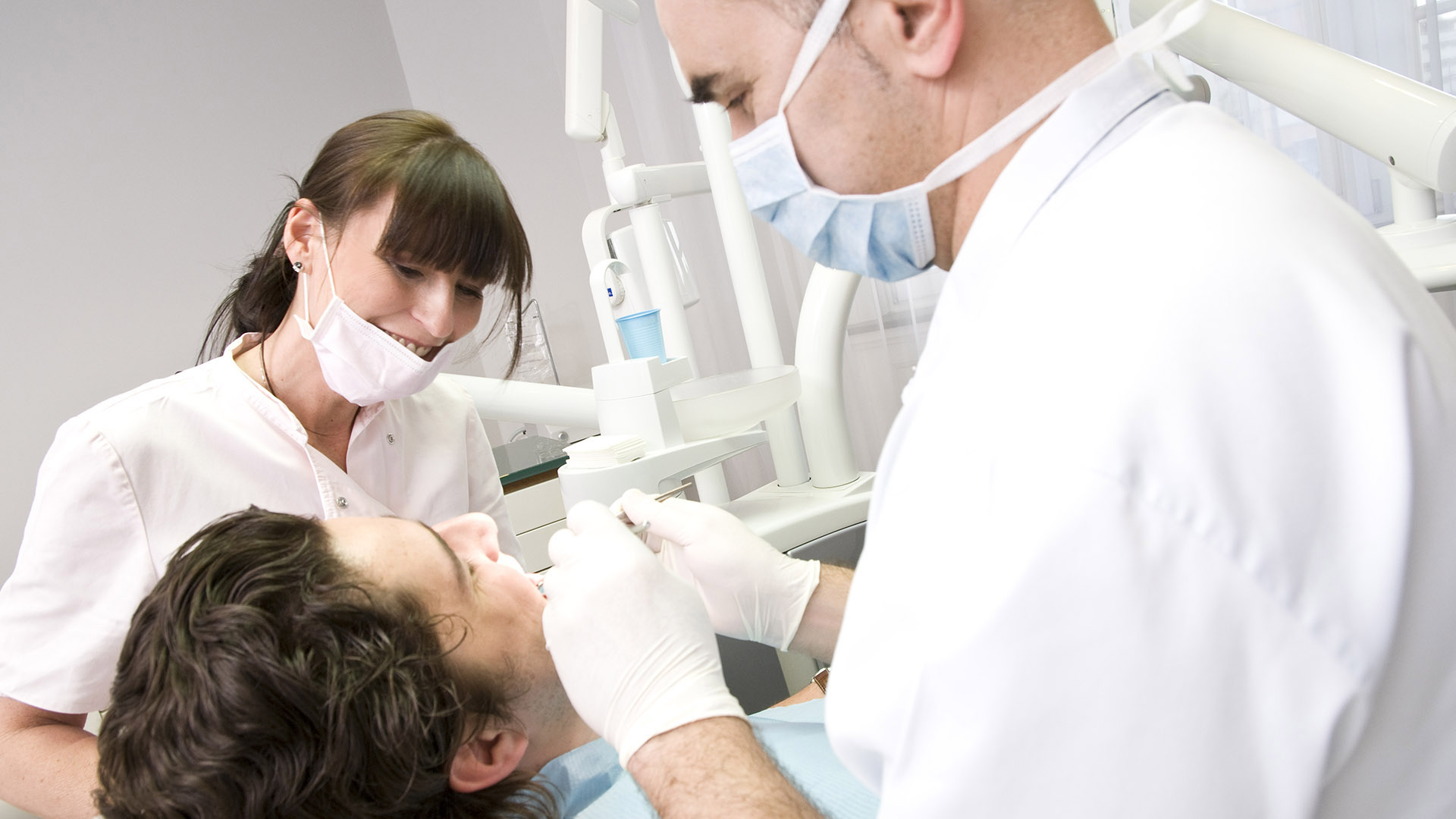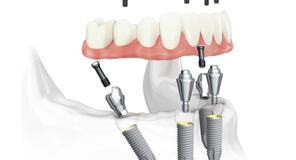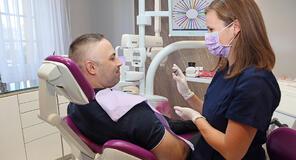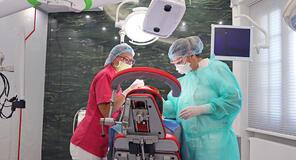The abutment is a superstructure, which already shown from the surface of the bone and gums. The crown will be placed on it.
The dental implant itself is placed into the bone in such a way that it does not protrude out from the bone, just like the root of the natural tooth.
The inside of the implant is hollow, and after the healing period the abutment is screwed into the hole. The abutment is the part which sticks out from the surface of the bone and the gum. This is not the crown itself. Imagine a natural tooth that has been filed down by the dentist so as to prepare it for the placement of the crown.

The abutment itself looks like a tooth stump. The abutment of the implant can be made of titanium or metal-free zirconium. The dentist’s choice regarding the material depends on the position of the tooth. In the so-called smile zone (the zone involving the front teeth), due to aesthetic reasons, zirconium abutments are preferred, while in the chewing zone dentists prefer using titanium.

The loadability of both types of abutments is excellent. The only difference between them is a matter of aesthetics. Of course, in addition to the above mentioned reasons, the choice also depends on your financial means. Zirconium abutments are more expensive than titanium ones.
Traditional abutments, on which the dentist fixes the final dental prosthesis with a special glue. Abutments fixed by screws, which, due to their technology, allow a non-permanent bond, so in case correction or replacement of the prosthesis will be necessary in the future, the change can be easily implemented. The dentist unscrews the prosthesis, the dental technician makes the necessary corrections, and finally the dentist screws back the prosthesis. This process is painless, fast and economical.
The final part of the dental prosthesis is the crown, which can also be either zirconium- or metal-based. We recommend crowns with a metal frame on titanium abutments, and crowns with a zirconium frame on zirconium abutments.
If you would like to be informed about possible dental solutions, want to get accurate information about dental treatment, please visit our clinic for a personal consultation.
Call us at phone number +36 1 36 11 222 or send an e-mail to info@moriczdental.hu with your questions, if you have a panoramic X-ray image, please send us it too.

Fogpótlás fájdalommentesen a Móricz Dentalban – modern technológiával, tapasztalt szakemberekkel, hogy újra magabiztosan mosolyoghasson!
Tovább olvasom
Az All-on-4 fogsor stabil és tartós megoldás teljes foghiány esetén. Kényelmes viselet, természetes megjelenés – tudja meg, hogyan működik!
Tovább olvasom

A Móricz Dental Fogászat számos fogpótlási lehetőséget kínál, hogy visszanyerje mosolyát. Ismerje meg a legjobb megoldásokat és kérjen időpontot!
Tovább olvasom
Ismerje meg a különböző fogszabályzó típusokat, azok előnyeit és hátrányait! A Móricz Dentalban segítünk megtalálni a legmegfelelőbb megoldást.
Tovább olvasom
Ismerje meg az implantációs fogászat előnyeit és folyamatait, amelyek tartós és esztétikus megoldást nyújtanak foghiányokra a Móricz Dental szakértőivel.
Tovább olvasom